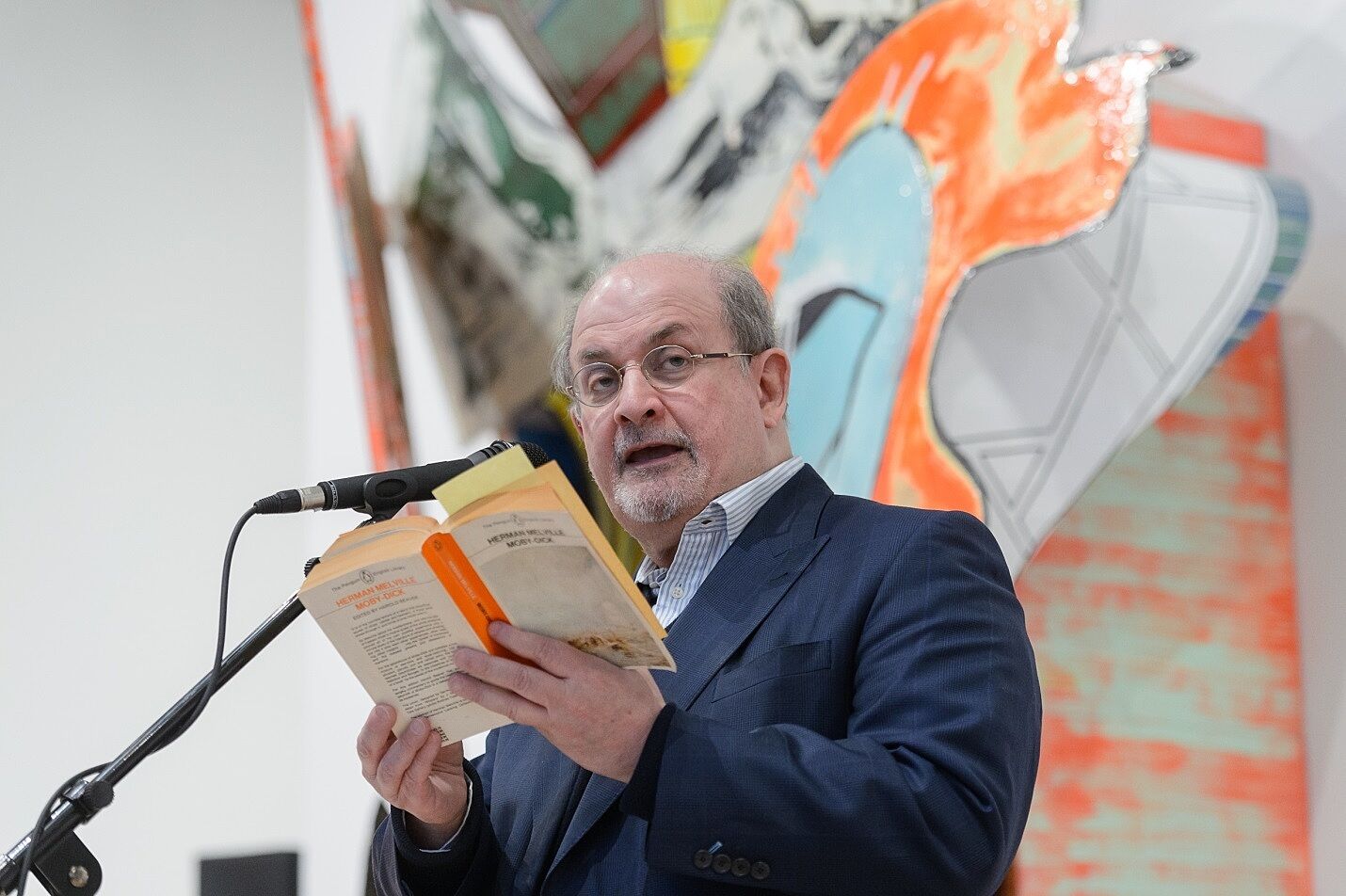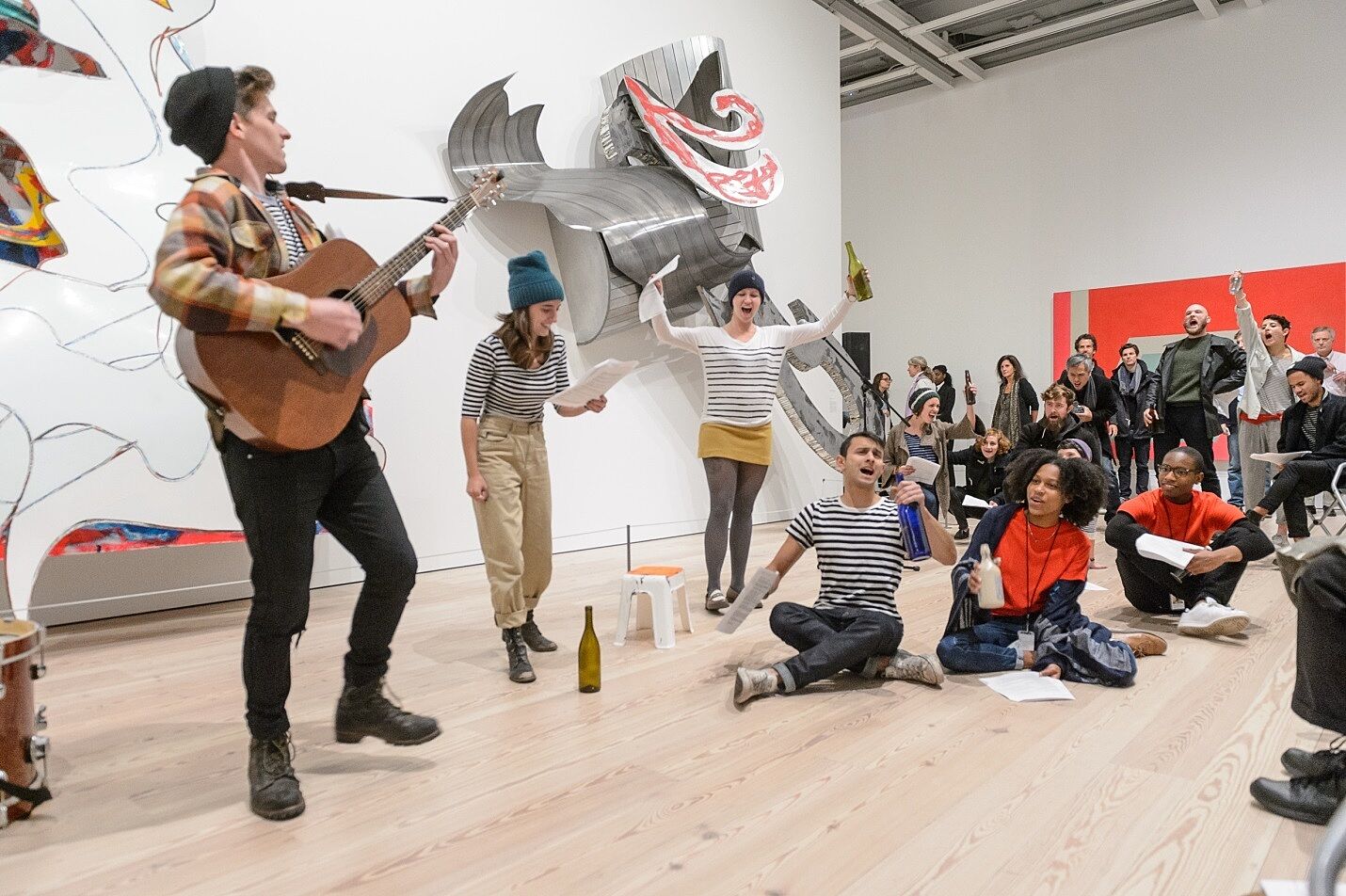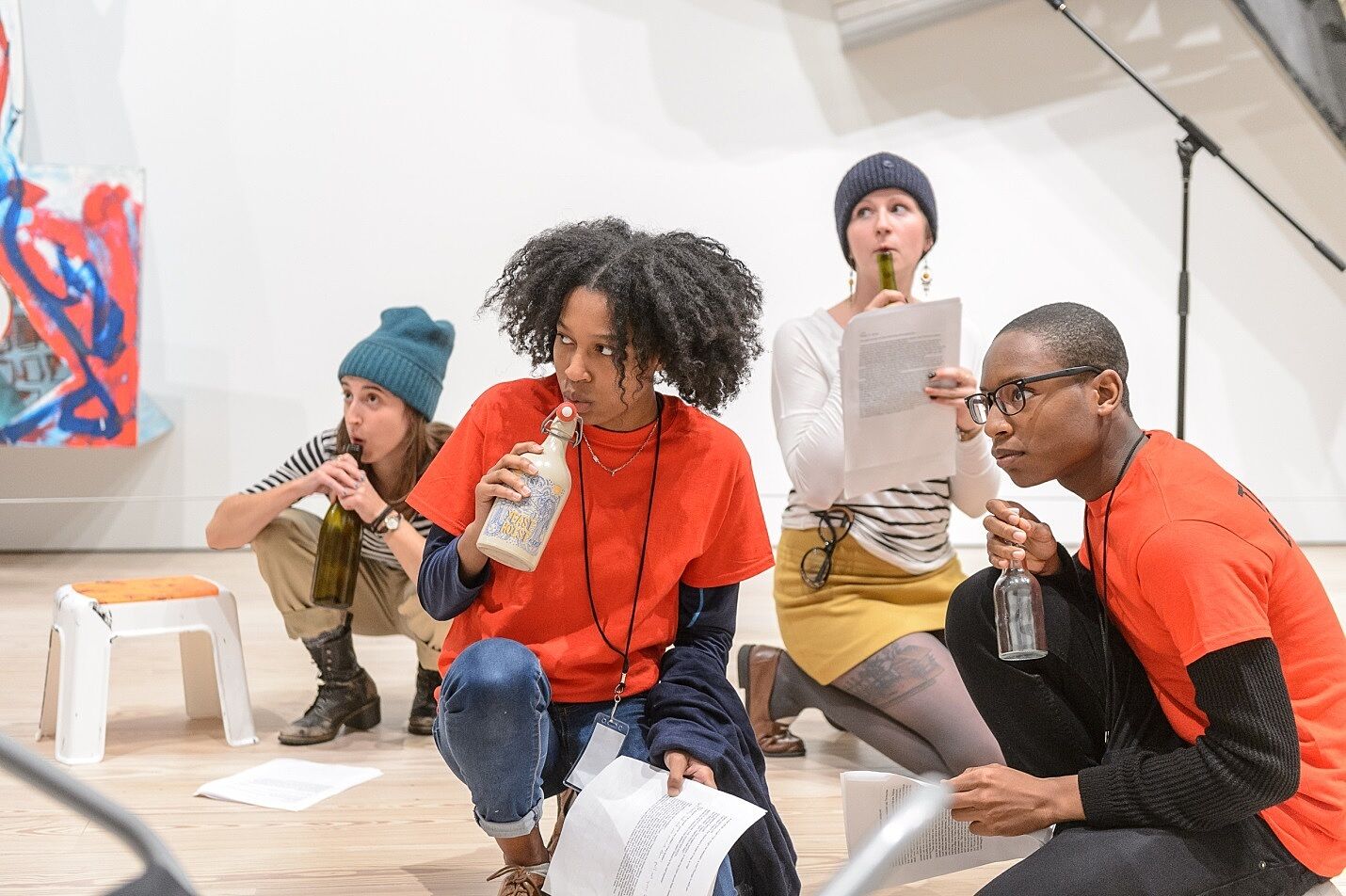Moby-Dick: A Marathon Reading
Oct 17, 2015
On November 13 and November 14, the Whitney hosted Moby-Dick: A Marathon Reading in the Frank Stella: A Retrospective exhibition. Writers, artists, and editors took their turn to recite what some critics call the best American novel ever written: Herman Melville’s Moby-Dick; or, The Whale. The event also celebrated the 164th year anniversary of the novel’s publication. Working alongside the coordinators of the marathon and the security guards to keep the event running smoothly, I began to develop a deeper appreciation of the novel, Frank Stella’s works, and—after standing for four hours—the Museum’s guards.
The reading took place in the gallery where three works from Stella’s Moby Dick series: Fedallah (1988), Whiteness of the Whale (1987), and Loomings (1986) are on view. At first, I thought it was odd that Stella’s three works were not displayed in the order of the chapters. What I didn’t know was that Stella’s Moby Dick paintings were actually responses to the chapters rather than literal representations of the story.
Although Stella was initially inspired to create his Moby Dick series by seeing beluga whales at the New York Aquarium, I believe the real allegory is in his ability to relate to Ahab, the character in the book who is notorious for his delusionary willfulness to tackle the great White Whale. The arrangement of the three works tells its own story. Fedallah, a chapter describing the ominous harpooner who feeds Ahab’s madness, is, to me, the busiest of the three works. In the Whiteness of the Whale, an area of white as the main focal point of the work. In this chapter, Ishmael attempts to break down what makes the whale seem so triumphant. Loomings (the title fo the first chapter in the book) is comprised of only two main colors and minimal design, perhaps representing clarity: although Ishmael feels hopeless and suicidal, he knows that the remedy is to succumb to his madness.
In Moby-Dick, Ahab represents the stubborn vengefulness of the human spirit, while the White Whale symbolizes the obstacle that the men tackle. The White Whale has been compared to procrastination, writer's’ block, or financial issues. For me, it was almost poetic when the artists read their portions of the novel. Although, in Moby-Dick, Ahab is consumed and defeated by the White Whale, the marathon felt almost as if it was not only a commemoration to Ahab’s loss, but a stance for artists to never give up their commitment to their work.
By Juliana, Youth Insights Leader




